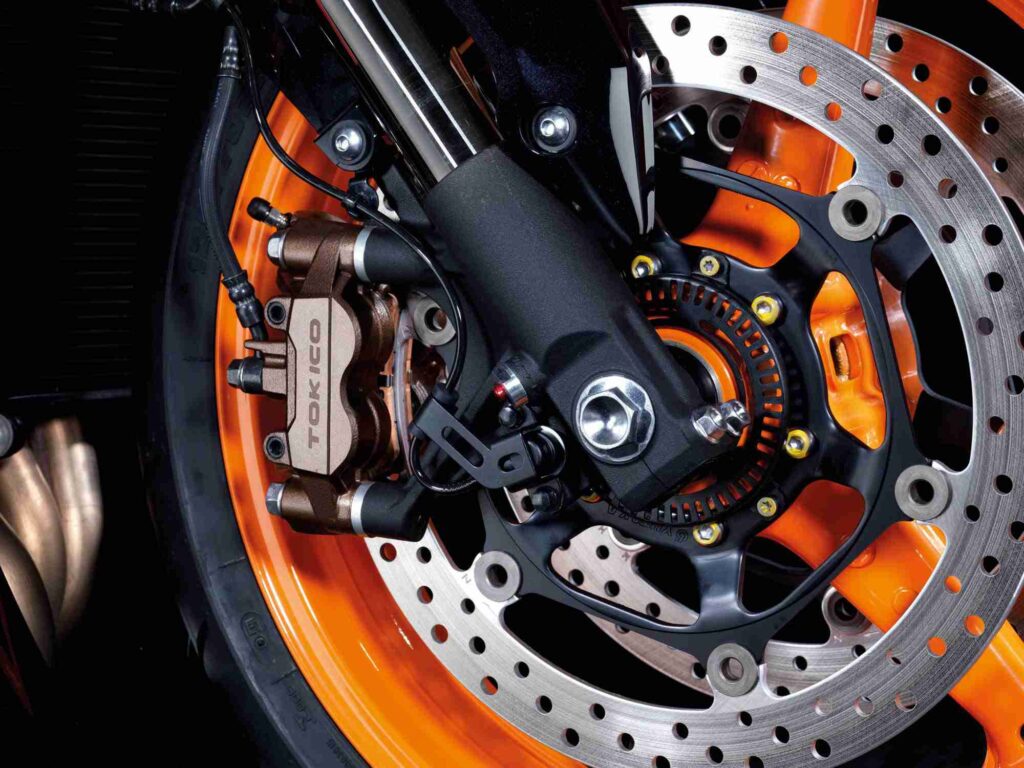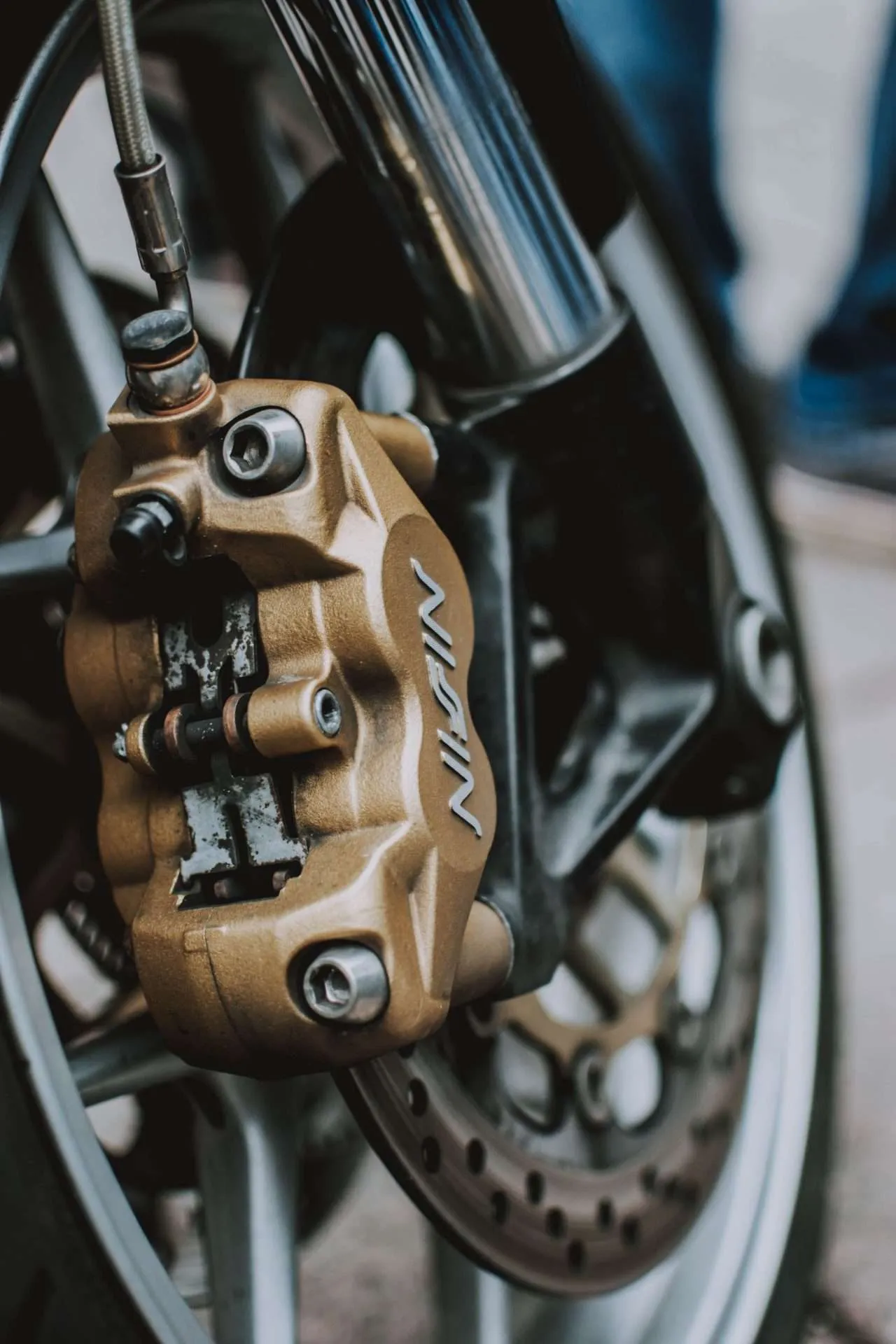
Understanding the functioning of motorcycle brakes is crucial for enhancing your skills as a rider. Here’s an overview of the braking mechanism on your motorcycle.The braking systems in motorcycles typically resemble the disc brake mechanism found in cars. While a few motorcycles use a drum brake, the predominant brake systems on both the front and rear wheels in today’s motorcycles are disc brakes.
Brake Configuration The primary distinction in braking systems lies in the method of brake activation. In a car, the brake pedal triggers all brakes simultaneously. Conversely, on a motorcycle, there are a couple of approaches. In most motorcycles, the braking system activates the two wheels independently. A lever on the right side of the handlebar controls the front brake, while a foot pedal on the right side operates the rear brake. This separation allows the rider to engage the front brakes initially (which handle approximately 70 percent of the braking load), enhancing safety in various scenarios. Another configuration involves triggering both brakes using the handlebar lever, automatically delaying the engagement of the rear brake for the rider. The safety advantages of this configuration are a topic of discussion among riders, largely influenced by personal preference.
How Motorcycle Brakes Function Regardless of the method used to trigger motorcycle brakes, they operate in a similar manner: either a cable or a lever engages the master cylinder, initiating a piston’s action to apply pressure on the brake fluid. As brake fluid is incompressible, this pressure is then transmitted through the brake lines to another piston within the brake caliper. The caliper, in turn, applies pressure on the brake pads. This pressure causes the brake pads to clamp down on the rotor, which is connected to the wheel. The resulting friction between the rotor and the pads converts the motorcycle’s kinetic energy into heat, consequently decelerating the bike. Given that motorcycle wheels are entirely exposed to the environment, the rotors and pads efficiently dissipate this generated heat. The inclusion of brake boosters is unnecessary for all but the heaviest motorcycle models. The majority of riders can exert sufficient force for braking due to the lighter mass of a motorcycle.

A Note on Rotors It’s evident that motorcycle brake rotors are seldom solid, smooth discs. The exposed design, advantageous for efficient air cooling, also makes them susceptible to water from various environmental sources and wet roads. Incorporating slots and cross-drilling is a safety measure to channel water (including steam generated from contact with hot rotors) away from the rotor. This prevents any interference with rotor/pad contact and preserves brake efficiency.
The brake configuration in motorcycles differs from that of cars. While a car’s brake pedal activates all brakes simultaneously, motorcycles typically have two separate controls for the front and rear brakes. A lever on the right side of the handlebar operates the front brake, while a foot pedal on the right side controls the rear brake. This setup allows the rider to engage the front brake first, which is responsible for about 70% of the braking load, enhancing safety in various riding scenarios.
Understanding the working mechanism of motorcycle brakes is essential for riders to effectively use them. When a rider applies the brakes, a cable or lever engages the master cylinder, initiating a piston’s movement to exert pressure on the brake fluid. Brake fluid, being incompressible, transmits this pressure through brake lines to a piston in the brake caliper. The caliper then applies pressure on the brake pads, causing them to pinch the rotor attached to the wheel. This generates friction, converting the motorcycle’s kinetic energy into heat, subsequently slowing down the bike.
Motorcycle brake rotors are designed with slots and cross-drilling to enhance safety. These features help disperse water and steam, preventing interference with rotor and pad contact, thus maintaining brake efficiency even in wet conditions.